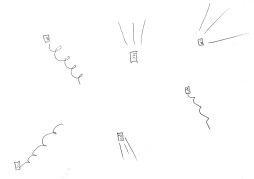 As have many other scientists, I’ve whinged before about the exploitative nature of scientific publishing. What other industry obtains its primary material for free (submitted articles), has its construction and quality control done for free (reviewing & editing), and then sells its final products for immense profit back to the very people who started the process? It’s a fantastic recipe for making oodles of cash; had I been financially cleverer and more ethically bereft in my youth, I would have bought shares in publicly listed publishing companies.
As have many other scientists, I’ve whinged before about the exploitative nature of scientific publishing. What other industry obtains its primary material for free (submitted articles), has its construction and quality control done for free (reviewing & editing), and then sells its final products for immense profit back to the very people who started the process? It’s a fantastic recipe for making oodles of cash; had I been financially cleverer and more ethically bereft in my youth, I would have bought shares in publicly listed publishing companies.
How much time do we spend reviewing and editing each other’s manuscripts? Some have tried to work out these figures and prescribe ideal writing-to-reviewing/editing ratios, but it suffices to say that we spend a mind-bending amount of our time doing these tasks. While we might never reap the financial rewards of reviewing, we can now at least get some nominal credit for the effort.
While it has been around for nearly five years now, the company Publons1 has only recently come to my attention. At first I wondered about the company’s modus operandi, but after discovering that academics can use their services completely free of charge, and that the company funds itself by “… partnering with publishers” (at least someone is getting something out of them), I believe it’s as about as legitimate and above-board as it gets.
So what does Publons do? They basically list the journals for which you have reviewed and/or edited. Whoah! (I can almost hear you say). How do I protect my anonymity?
Yes, reviewing can be a fast way to make enemies (hence my advice not to divulge your identity unnecessarily), and being an editor is an even more effective way of pissing people off. So protecting your identity is an important criterion for most scientists. Publons first checks that you have actually done the review and/or edited a paper, and then you can opt to reveal not only that you reviewed a particular paper, you can also choose to show the review itself (most people do not, however). In other words, it’s as open as you’d like it to be.
How does Publons check that you’ve done what you said you’ve done? Easy. You merely forward the editors decision e-mail to them after you’ve registered. They will check it and then list it on your profile page. The same goes for editing.

Random publons zipping through the publisphere at the speed of review
Now I wish I had kept all those decision letters and editor thank-yous over the years. As it turns out, I’m probably missing the e-mails from about 40% of the reviews I did over the last decade. Still, I managed to dredge up a sizeable number of them that are now on my profile page. Note to scientists everywhere – keep those emails! I have recently also noticed that some journals have an automatic service embedded within their manuscript-handling software to forward completed reviews/edits to Publons for you. This is an easy and highly recommended way of getting credit where credit is due.
While the exercise might represent not much more than a self-gratifying list for many, it is also a potential way of letting your administrators and grant-application assessors know that you are a busy, active, and contributing scientist helping to turn the great wheel of human knowledge.
CJA Bradshaw
1A ‘publon’ is defined (by Publons) as “minimum unit of publishable material“, although I’m not entirely sure I know what that means.

